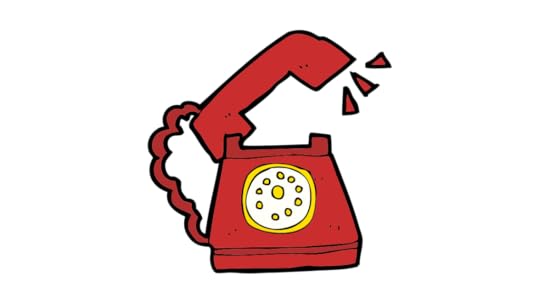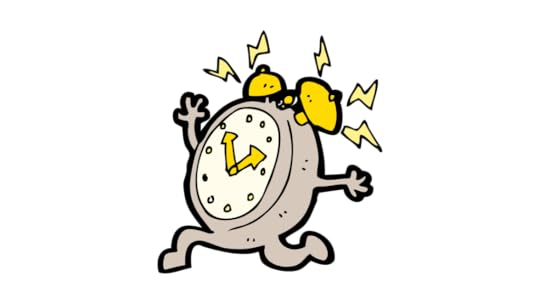Time Really Is Money Managing Your Customers’ Time To Win More Orders

Your Prospects Are Giving You Their Time. What Are You Giving Them in Return?
I read a blog posting recently about what a
salesperson could do to increase sales. The title was something catchy like “A Billion and One Tips to Increase
Sales.” It was hard to argue with the premise of the post. Everyone in
sales can use good advice on increasing sales. There’s always something new to
learn.
In this case, the author’s tips were all about
creating more sales activity. He asked, What should you do if you have
prospects but they aren’t moving forward fast enough? His answers were designed
to create such a flurry of sales activity around prospects that they would
engage and move forward with the seller.
But is random sales activity the same as selling?
And, if a prospect is not yet fully committed to the buying process, is random
sales activity the way to get them engaged?
Nothing is sometimes better than something
I once had a salesperson named Arte who had
confused activity with selling. He came into my office one day and told me that
he had invented his own method of selling that he called SWARM. The acronym
stood for Surround With Activity to Regain Momentum. His idea was to envelop
his prospects in a constant swarm of sales activities—phone calls, visits,
emails, voice messages, invitations to webinars and seminars, and product
demonstrations—in the hope that eventually something would stick and the
prospect would relent and engage.
How’d that work for Arte? Not so well. But he
got high marks for creativity.
Unfortunately, many salespeople fall into the
trap of believing that doing something, anything, with a prospect is better
than doing nothing. This happens all the time when the prospect has gone radio
silent. There are lots of reasons why this occurs, and it is the job of the
salesperson to determine why and respond appropriately and with content that
has value for the prospect. But rarely is the correct response to bombard the
prospect with trivial, time-wasting requests and interactions.
Keep in mind
the customer’s objective
In a sales situation, or a buying situation, it
is important to keep in mind that the goal of the customer is to gather the
information they need to make an informed purchase decision with the least
possible investment of time. This is not to say that customers won’t spend the
appropriate time to purchase a product or service. This just means that they
don’t want to invest a minute more than they have to.
Create and
deliver value each time you talk to your prospects and customers
If you are selling, all of your interactions
with a customer should have a defined purpose, deliver clear value, and support
the customer’s goal. Instead of taking up his or her time with trivial
requests, consider the opposite approach: make sure that every interaction you
have with a prospect or customer achieves Maximum Impact in the Least Time
(MILT) possible. It requires planning and thought to make certain that in each
interaction you are providing information that will bring them closer to their
goal of making an informed decision. The result is that you will bring value to
the customer through your selling. If you want a customer to engage, create
value for them through your actions. Wasting their limited time with
“sales activities” does the opposite.
Selling has a purpose. It is not the goal of
your prospects or customers to spend time with you. In fact, the opposite is
true. They want to accomplish their job, which is to buy a product or service,
while spending as little time with the salesperson as possible. The winning
salesperson will usually be the one who knows how to make that happen.
Key Takeaway: Create value with each interaction. Sometimes doing nothing is better than doing something.

The Economics of Attention
Shouting louder isn’t the key to being heard
In 1971, Herbert Simon, a professor at
Carnegie-Mellon University and a future Nobel Prize winner in economics, wrote
a prescient description of the upcoming information revolution and the impact
that the ready availability of seemingly endless quantities of information
would have on our ability to process and use it. Although Simon wasn’t
specifically addressing the selling and buying of products and services, the
conclusions he drew apply to today’s sales environment.
The following is a quote from a paper Simon
published in 1971:
“In an
information-rich world, the wealth of information means a dearth of something
else: a scarcity of whatever it is that information consumes. What information
consumes is rather obvious: it consumes the attention of its recipients. Hence
a wealth of information creates a
poverty of attention and a need to allocate that attention efficiently
among the overabundance of information sources that might consume it.” (Simon, H. A.
(1971), “Designing Organizations for an Information-Rich World”, in
Martin Greenberger, Computers, Communication, and
the Public Interest, Baltimore, MD: The Johns
Hopkins Press,ISBN
0-8018-1135-X. pp 40-41)
What Simon was describing was a situation based
on the laws of economics—namely, that the supply of any commodity, in this case
the attention span of any consumer of information, is limited, and that market
forces will efficiently allocate that scarce resource among the various
interests competing for it.
Let’s apply Simon’s lesson to the selling
environment. Your prospects and customers are, by definition, consumers of
information. They seek information from different sources, such as the
Internet, social media, and salespeople, in order to make fully informed decisions
about purchasing the right products and services for their needs. However, as
Simon pointed out, prospects and customers have a limited supply of attention
to divide among the information sources requesting a piece of it. At some point
during their buying process, they have to decide how to allocate their
attention to vendors, administrative tasks, management responsibilities,
meetings, making phone calls, returning emails, updating their Facebook status,
and texting with their spouse, kids, and friends.
Your prospects and customers make an economic
decision about how to prioritize the allocation of their attention bandwidth.
Sellers that provide the greatest return to the prospect on the time invested
in them will be given more time to sell the prospect. In other words, sellers
that create value for the prospect and customer just by not wasting their time will have the inside track. And sellers that
waste the prospect’s time will not get responses to their emails and voice
mails.
In my book, Zero-Time Selling, 10 Essential Steps to Accelerate Every Company’s Sales, I discuss how your prospects calculate an economic return on the time they invest in you as a seller. I call this the Return on Time Invested (ROTI.) Your prospects judge every sales interaction they have with you by whether it provides value. If you waste the precious minutes of attention the prospect has allocated to you, then they will make the perfectly rational decision to invest their time with another seller. Again, are you wondering why your prospects aren’t listening to you? Now you know.
How can you effectively cut through the welter
of information your prospects confront and become an asset instead of a
liability on their attention balance sheet? The key is to Sell with Maximum
Impact in the Least Time (MILT) . Selling with MILT requires you to be
. Selling with MILT requires you to be
responsive. In sales, responsiveness is the combination of information content
and speed. Quickly provide all of the information the prospect needs to make an
informed purchase decision with the least investment of their attention
(otherwise known as “time”) and you will be rewarded with all the
time you need to make your case. Help your prospect get their job done more
quickly and they will allocate more of their limited attention to you because
they have learned that you provide a better value and enhanced return on the
investment of their time than your competitors do.
Selling with MILT requires planning. Each
interaction with a prospect has to create value for them. Whether it is a phone
call, email, text, video chat, or sales call, planning for the next prospect
interaction has to answer the question: what information does the prospect need
from us today, or what questions do they need answered today, to move to the
next step in their buying process?
Increase your prospect’s ROTI by ruthlessly
eliminating the time-wasting “check-in” and “touching base”
calls from your sales repertoire. e sure to also eliminate the “get
backs” from your selling. (“That’s
a great question, Mr. Prospect. Unfortunately I don’t know the answer and I’ll
have to get back to you with that
information.”) Make absolutely certain that the person talking to your
prospect can answer whatever question arises.
Use the Economics of Attention to your
advantage. And keep in mind that the ROTI is a two-way street. Maximize the
prospect’s return on the time they invest with you and you’ll earn the maximum
return, in the form of orders, on the time you invest in them.
Key Takeaway: Sell with the Maximum Impact in the Least Time (MILT) to maximize your customer’s ROTI.

Are You Worth Your Prospect’s Time?
Very
early in my sales career I made a cold call on the CEO of a large homebuilder
in my territory. I was selling accounting systems for what was at the time one
of the larger computer companies. I was freshly trained in sales and computers,
a newly minted sales rep ready to go out and conquer. Shoes shined and red
power-tie straightened, I marched into the lobby and asked the receptionist to
see the CEO. I fully expected to be rebuffed. so I was completely taken aback
when the CEO, Bill, came into the lobby, shook my hand. and escorted me back to
his office.
Bill
was very polite and completely old-school, even for that time. Silver hair,
nice tan, expensive 3-piece suit. He took me into his office, which was empty
except for his massive wooden desk with a phone on it. He motioned for me to
sit down opposite him. Bill asked for my business card. I reached over the
aircraft carrier-sized surface of the desk and handed him my card. He took it,
slowly turning it in his hands, examining it back and front, and laid it on the
desk in front of him. “So, young man, what can I do for you?”
I
took a deep breath and launched into my pitch. Just as I had been trained to
do. Bill let me talk for about a minute or two and then raised his hand for me
to stop. He opened a drawer in his desk and pulled out a stack of business
cards bound with a rubber band that was literally two inches high. “These
are all the computer salespeople that have been by my office in the last
year.” He spread the cards across the top of his desk. There were cards
from nearly every sales rep in my company, as well as those of every competitor
I could think of. “Tell me, how are you different or better than any of
those folks?”
The
answer was…that I wasn’t. Yet.
Give your prospect a reason to buy
I learned later that
Bill talked to nearly 50 salespeople just like me every year. Outwardly there
was no question that his firm would benefit from upgrading its computer and
accounting systems. Bill knew that and had simplified the task for every
salesperson, giving each one an opportunity to speak to him directly. There
were no layers to go through, no BANT qualification to process because they
were talking to the ultimate decision-maker. And yet, no seller had ever gotten
past the first call with Bill.
Why?
Because Bill was waiting for someone to give him a reason to buy. That reason
was not going to be a new feature or its associated benefits. He was patiently
waiting for a salesperson to create some value for him by providing a simple,
cogent reason for him to invest his time and money in a new system. In short,
he was waiting for a salesperson to step up and differentiate his products from
the rest.
The
lesson Bill taught me continues to grow in relevance for salespeople, both new
and experienced. Today more than ever, how you sell is as important as what you
sell to create value, build trust, and differentiate yourself from your
competition. It isn’t enough to show up at a prospect’s office or on a sales
call and expect the buyer to fall in love with your product or service solely
based on its features and benefits. It also isn’t just about playing the
numbers game. You could make a million cold calls, but if you don’t give the
prospect something of value, something that provides them with a return on the time
they invested in you, then you are never going to earn their business.
Ask yourself a simple question
Before
every prospecting call, sales call, or existing account review, ask yourself:
What value are you creating for the buyer? What content are you providing that
will enable them to move further along in their buying process and perceive
that the time invested in you was time well spent?
In
the formative years of my career there weren’t as many resources available as
there are today for salespeople to research industries, companies, and
individuals, and to develop a better understanding of your prospect’s
requirements for the products and services you sell. We didn’t have access to
an Internet full of white papers, articles, and blogs to help prospects make
more informed purchase decisions in a shorter time. (There were no power
outlets on the covered wagons and no Wi-Fi on the Oregon Trail.)
The
approach I took to creating value on a first call was to tell stories that
illustrated how customers were using our products how our products provided the
unique value they needed. Simple stories
helped my prospects envision how they too would benefit by using our products.
By using their time wisely I earned the right to more of their time.
A
little over a year and more than 50 salespeople later, I went to see Bill
again. I was a bit wiser and more experienced. We started all over again. But
this time with a different conclusion.
“Please Don’t Make Me Repeat Myself”
An inescapable fact of selling is the inelasticity
of the time available to your prospects and customers to perform their jobs.
They are trying to increase their productivity and accomplish more in their
business, with the same number of poeple, or fewer, and fewer resources. Just
like every company out there.

Of course, the same applies to your company and your business. If you are tasked to sell more with the same resources, then time becomes the most precious commodity you have. Right? If you are given a higher quota and you divide that number by the number in that song from the musical Rent (“five hundred twenty five thousand six hundred minutes. How do you measure, measure a year…”) it means that you have to sell more dollars per minute this year to meet your objectives. You don’t have time to waste. And your customers don’t have time to waste.
It is important to examine each sales
opportunity you are currently working to determine if you are: (a) consuming
too much of the prospect’s time; and thereby (b) decreasing your chances of
winning their business. These two go hand in hand.
Here is a simple metric you should use to
determine if you are frittering away the prospect’s time (and with it any
potential order.) Answer this question: How many times has your prospect had to
tell you their story? Their story includes their requirements, their budget,
their timeframes, their decision-making process, and whatever other background
information you need to support them through the buying process.
The more times a prospect is forced to tell you
their story, the less likely you are to win their business.
If you make your prospects tell you their story
more than once, then it means one or more of the following time-wasting
symptoms are present in your selling:
1. You’re not
listening to the customer. How can you be responsive to the customer and
provide them the information they need if you aren’t listening and documenting
what they are telling you?
2. You’re too
dependent on others to sell. This means that your salespeople don’t have
enough knowledge and expertise about your products or your prospects’
industry. Each new person that is
brought into an account invariably wants to hear the customer’s story with their
own ears.
3. Your
salespeople are too reliant on management to win the sale. It is my
experience, both as a salesperson and sales manager, that if you introduce a
sales manager into a sales situation the first thing he or she will do is ask
the prospect to their story. The manager does this because he or she doesn’t
really trust the version provided by the salesperson.
Keep in mind that your prospects want to make
informed purchase decisions with the smallest investment of their time
possible. Forcing them to repeat their story to multiple people from the same
company wastes time that they could be spending on other productive activities
and will lead them to conclude that working with your company would not be
efficient or wise.
Key Takeaway:
Don’t make your customer repeat himself.
One last point. If you are wasting the
customer’s time you are also reducing your own sales productivity. Spend too
much time with one customer and you’ll have less time to spend with other
prospects and customers.
The post Time Really Is Money Managing Your Customers’ Time To Win More Orders appeared first on Andy Paul.
Andy Paul's Blog
- Andy Paul's profile
- 4 followers



